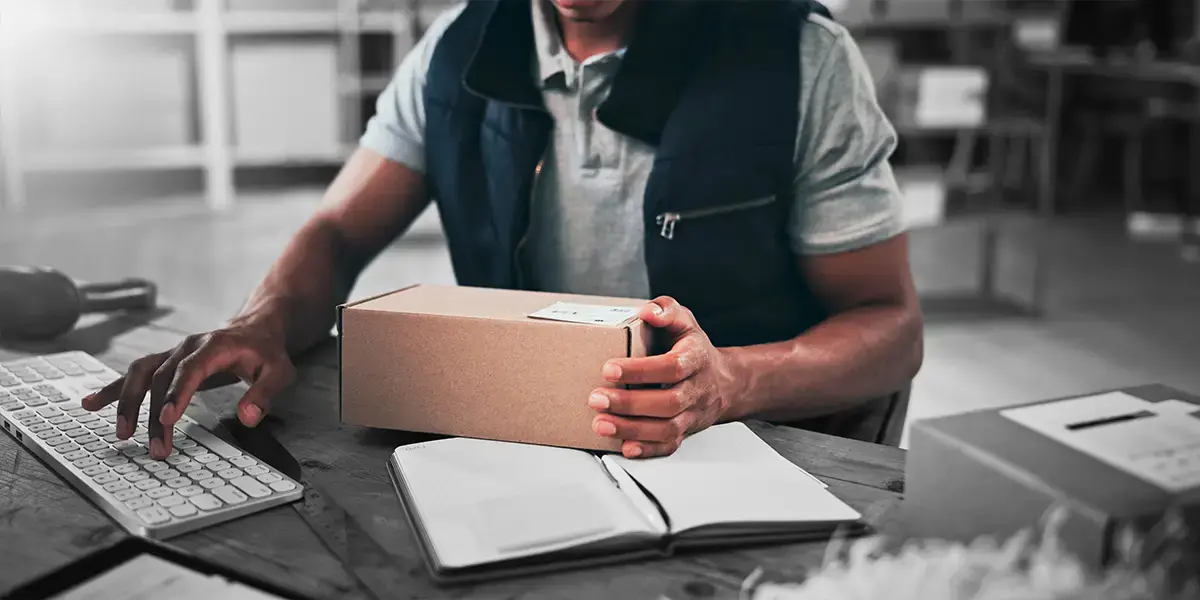
Nowadays there is a whole range of different "types" of consumers who value different things from a return perspective. Which consumer or consumers from the following do you attract? How do you work to meet their individual needs?
Read more about the four (+one bonus!) personas we have identified below:
- The fashionista
- The Eco-champion
- The modern family
- The new online-generation
- BONUS: The pandemic surfer
- What do you need to do to support these consumers online?
1. The fashionista
The Fashionista is here to stay. She just can't get enough of the latest trends and loves to show them off to loved ones, and on social media too. What you need to know about the Fashionista is that she is a very active shopper, but rarely keeps all the products she has bought after showing them off. The Fashionista is the only type of consumer for which we can generalize about gender because surveys show that it is usually a woman.
She is between 18 and 25 years old, and a VIP customer of several online retailers. Since she returns many of her purchases and wants to order new items quickly, she expects a quick refund. Preferably within 3 days.
The Fashionista shops for three reasons:
- Wardrobing
Buys, uses, and returns. Expects a full refund. - Staging
Buys expensive products to post on social media. Then returns everything. - Bracket
Orders a lot of items in different sizes and colors, and then returns most of them. However, she does keep the products she likes.
What do you do to keep the Fashionista happy?
- Don't punish everyone for the behavior of a few customers.
Data show that despite a lot of returns, this type of customer is usually the one you earn most from in the end. - Give immediate refunds.
It can be a good idea to limit this to VIP customers. - Offer free-of-charge returns.
Can be beneficial to restrict to VIP customers or different geographic markets. - Clear information.
Update size guides, product information, and photographs on the website. E-commerce returns cannot be eliminated, but there are good ways to reduce them.
2. The eco-champion
The Eco-champion is a conscious and well-informed customer who prioritizes sustainability. This person has nothing against waiting a couple of extra days for an item, return or refund if it means the process takes place in an as environmentally friendly way as possible. The Eco-champion can be a man or woman but is often in the age range of 26 to 35 years old. The Eco-champion doesn't prioritize price but is happy to pay a little more for environmentally friendly transport and sustainably produced products. That said, 'Fast Fashion' is nothing for the Eco-champion.
The Eco-champion is happy for the return process to be paperless and selects the most sustainable shipping option you can offer.
What do you do to keep the Eco-champion happy?
- Offer green shipping options for returns.
Electric vehicle options or bicycles will give the Eco-champion cause to rejoice. Delivery boxes and postal agents are also popular options, where the returns are then shipped in bulk in order to optimize transport. - Educate your customers with more information about sustainable options.
19 percent of all online shoppers know which shipping option is the most sustainable and environmentally friendly one. This means that 81 percent may need more information. - Create a paperless return process.
You can reduce paper usage by up to 60 percent by only using a digital return platform. In 2020, 68 percent of consumers in the UK chose to print their shipping labels at the postal agent, instead of including a return label in the parcel. - Tell people about your sustainability work.
Make sure that sustainability is included and is part of your return policy. Describe how you actually work with sustainability, and what difference your work helps to make.
3. The modern family
The everyday life of the modern family includes many activities, such as transport to and from work and school, football training, and orchestra rehearsals. Quite simply, a rather fantastic but hectic family life. Convenience is an important factor in the daily life of the family as there is rarely any time over for anything else.
The modern family consists of two adults between 26 and 46 years old, as well as one or more children aged 0 to 16 years old.
The family welcomes different shipping options and would be happy to pay a little extra for the most convenient option, such as door-to-door deliveries, and returns collected in the same way. The refund is expected within a week in order to keep track of it and to find the time to order new products.
The modern family welcomes the opportunity to exchange one product for another, as the children are growing and sizes may not always be right at the first attempt. They prefer the deadline for a return or an exchange to be up to 30 days.
What do you do to keep the modern family happy?
- More shipping options.
Have the goods picked up at the door, offer delivery boxes, postal agents, and post offices. Perhaps you have further suggestions? - It's OK to charge for returns.
Most customers welcome free returns, but the modern family mostly welcomes the convenience of being able to choose for themselves. They are therefore quite happy to pay a little something to be able to return in the way that suits them best. - Offer a longer deadline for returns.
A longer return window reduces the stress for this type of customer. A longer return window doesn't mean more returns.
4. The new online-generation
In everyday language, when we refer to the "new" generation, we are referring to a younger group of people. However, in this case, it's the other way around. The coronavirus crisis has meant that even the older generation, 55+, has started to do more shopping online.
They have become the new internet generation.
This new generation of digital consumers can be likened to policy police who read about returns, tracking, costs, and refunds, long before they start looking at the products. Communication with this group of consumers is the key to whether they choose your webshop or another one. They generally make few purchases, but rarely return goods.
The new generation can be your best customer, but also your worst. Hint: They are not afraid to tell the world about bad experiences. They see it as their duty to share experiences. For that reason, communication is very important, and to constantly ensure that they are kept updated on return status and more.
What do you do to keep the New online generation happy?
- Make the return policy easy to find.
The new online generation is the consumer group most likely to look for a return policy and then scrutinize it. Therefore, make sure it is easy to find and understand. - Use shipping options with tracking capabilities.
Highlight this on the return policy page, and be clear about which shipping options can offer tracking for returns. - Offer free-of-charge returns.
This target group doesn't expect to have to pay for a return. They will use it as a criterion to compare you with other online retailers. - Keep them updated.
Via e-mail, SMS or push notifications.
5. BONUS: The pandemic surfer
The pandemic surfer comes in all shapes and ages and is largely a new online consumer. Despite their entry-level status, you could really say they make up for lost time and quickly become comfortable with online shopping and returns. But only if you make it simple for them.
To convert the pandemic surfer into a customer you need policies to be easy to read and easy to find. You also need to make delivery and offer return collection door-to-door, as this type of consumer sees this as a basic requirement. Returns are often sent back quickly.
Pandemic surfer mainly buys items for home and garden, electronics, comfortable clothing and sporting goods, because such items are desirable when spending a lot of time at home. It's difficult to create a long-term relationship with Pandemic surfers as they often find exactly the retailer best suited for the product they are looking for at the time.
What do you do to keep the Pandemic surfer happy?
- Offer collection at the door.
Since Pandemic surfers are relatively new online, collection at the door is a shipping option that they would trust. - Make the return policy easy to read.
Clarify all costs, return methods and options, the length of the return window, and the refund period. Clearly and concisely. - Show that the customer is most important.
Offer a longer return window and free returns. Provide evidence of a trusted returns process using positive customer reviews.
What do you need to do to support these consumers online?
- Improve your return policy.
Collaborate with the digital team to update, simplify, and raise the visibility of the return policy. It's important that your company is shown at its best. - Offer more shipping options.
As you have read, different types of consumers appreciate different shipping options. Review which consumers you mainly attract and make sure you are meeting their expectations before you start to work with the next group of consumers. - Put the customer first.
95 percent of all returns are made within one week of when the products were received, 98 percent within two weeks. A longer return window doesn't make any difference to these figures, but on the other hand, contributes to reduced stress for the customer. Ensure tracking is available and notify the customer when return status changes. - Improve your sustainability work.
Fashion is the sector considered least sustainable. By offering greener shipping options, working with CSR and charitable organizations, and providing paperless returns, you can take the first step towards a more sustainable business. - One size does NOT fit all.
Carry out research and find out which consumers you are currently attracting. Which ones do you want to attract going forward? After that, plan changes and improvements accordingly.
Related posts you might like:
About the author




